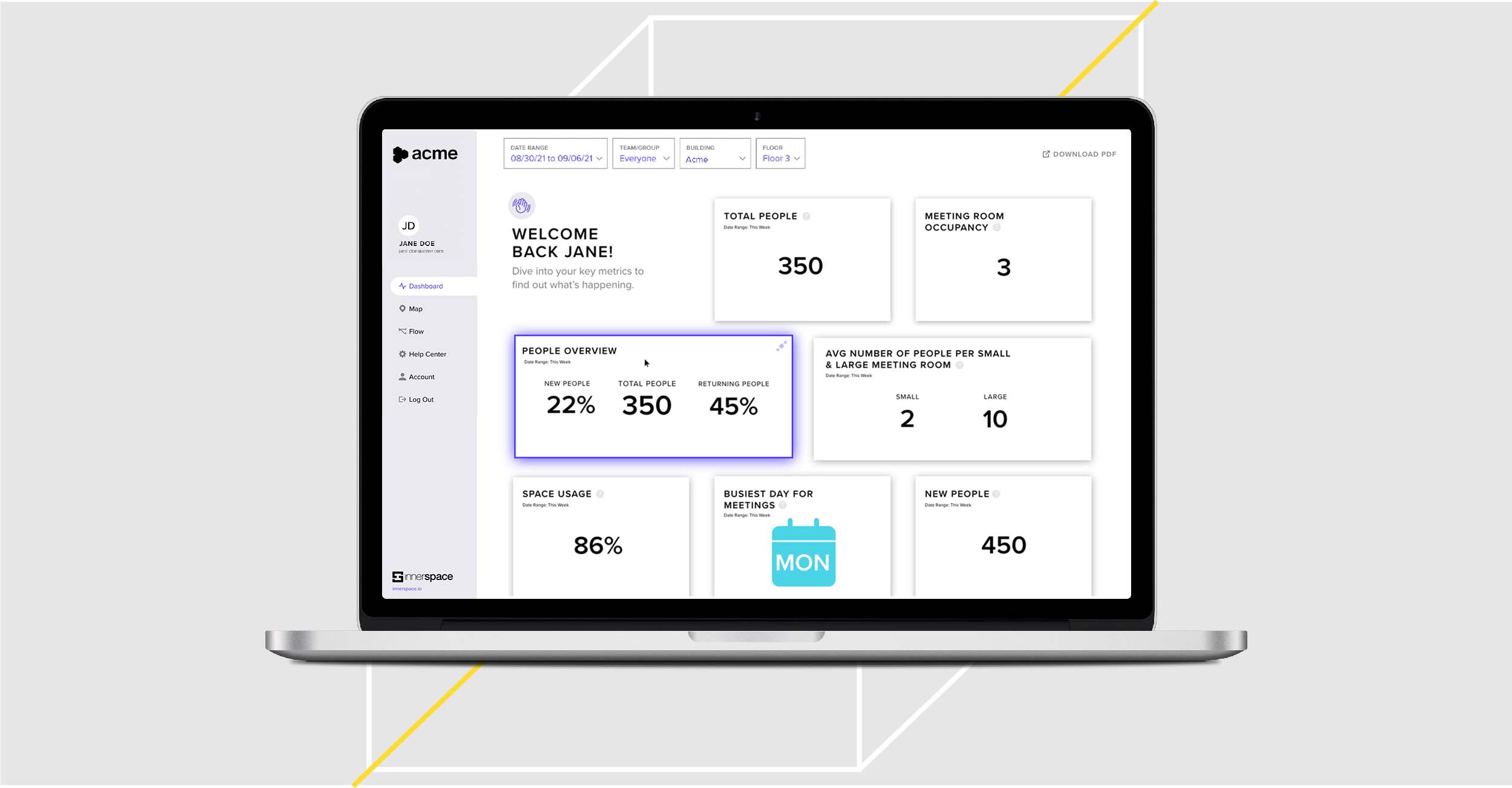The Secret to Maximize Office Space Utilization in a Remote Working World
If businesses could get rent rebates for unused office space, they’d be rich. Estimates say that 27% of office space isn’t even being utilized, let alone spaces that are under-utilized.
Whether it’s for maximum productivity, a great office vibe, or simply managing the chaos of hybrid remote work, it’s critical to maximize office space utilization for financial, performance, and cultural reasons.
Who cares about office space utilization analysis?
We all know office space needs to be used properly. And that requires proper office space planning. But when it comes to actual office space utilization analysis, here’s who needs it most—and why.
Finance and real estate teams: The finance team is going to care about office space costs because it’s a huge line item. This is especially true in the commercial real estate world, where long leases and expensive office improvements are the norm.
So everyone is concerned with how commercial office space—including things like meeting rooms, overall office layout, total workplace capacity, and other things that change based on the number of employees—actually function. And especially as companies look to reduce office space or avoid wasted space, utilization rate is incredibly important.

HR and workplace experience teams: While the finance team is worried about the money side of employee changes, HR and people teams are worried about the human side. Leadership doesn’t want employees to feel cramped, but at the same time not so spread out either.
Plus the company needs spaces conducive to different work styles, team meeting styles, productivity generation, and coping with a constantly-flowing stream of employees who may or may not be in the office on any one day. HR and workplace experience teams need to design offices with all that flexibility in mind.

C-suite leaders: From a high level, c-suite leaders need to think about the financial side and the people side. It’s the CEO who is going to think about how physical office space props up a great culture, how office spaces work in terms of attracting top talent, and understanding how offices are being used to empower both productivity and flexibility.

How to optimize office space
Everyone has a point of view about office space and space occupancy whether related to personal preference, office politics, psychological and sociological factors, and physical needs.
But we can’t make decisions based on these factors, because often they are only a part of the story. That’s where data comes in.
Why you need to calculate office space utilization
Understanding how your office space gets used is super important for three reasons:
- Comprehensive understanding: Data can show you the high level and drill downs of your entire office space. This means understanding human movement, where people congregate, and more that can lead to a better understanding of how much office space you really need.
- Unique and different insights: It’s one thing to get the gut feeling that meeting rooms are over crowded or people don’t have the desk space they need. It’s another thing to have numbers backing (or disproving) those gut feelings. This is especially true when you have space management software since you can store data over time to identify office space occupancy trends and highlight both unused and underutilized space.
- Better decision making: With a combination of numeric data and human feelings comes a stronger foundation from which to make decisions. On top of that, you’ll also be able to lean on the data as an explanation for a decision (or to experiment with something new), making buy-in and stakeholder management easier.
Office space utilization metrics examples
When thinking about calculating office space utilization, here’s what you might look for:
- Density: How many people can fit in the office without breaking safety codes?
- Occupancy: How many people can comfortably fit in the office space given your use case?
- Office cost per employee: Typically calculated as total cost divided by number of employees using that space in the time period.
- Peak periods: When the office, floor, or room is fullest.
- Space that is consistently over or underused: Taking a look at which rooms or areas are popular vs ignored.
Leveraging space utilization metrics properly
All of these foundational metrics, collected via occupancy sensors and analyzed through space management software, give you a better sense of capacity and occupancy trends. But that’s only the first piece of the puzzle in your office space planning. At InnerSpace we leverage your existing Wi-Fi infrastructure to gain deeper insights of your space – the science of your indoor space.

These office insights are:
- Team-based behaviors: Understand how teams use the space to better allocate your resources
- Visitor behaviors (new vs. returning): Gather when remote employees come in and which space they choose to use
- Pathway analysis: See where employees traveled throughout the work week
- Visit frequency: How often people come into the office, room or floor
- Dwell time: How long employees stay in a space, and for what purpose
In the end, all of these metrics help you understand how much space your company might actually need. They help you create a workplace strategy that understands how interior design and space efficiency can work together. For example, the strategy can address questions like how many private conference rooms are needed compared to meeting rooms, conference rooms, collaborative spaces, quiet spaces, and more.
A good office management strategy is in service of creating a better work environment and maximizing how much you get out of each square foot of office space. This will help you meet demand for any employee growth and provide employees with a much better employee experience.
Both numbers and feelings are data
When we say collect data it’s not about telling employees their feelings don’t matter or you don’t care how employees feel. Often humans can sense things even without numbers telling us about it. The numbers are to add additional credence to what’s already going on. With adequate data, human feelings have an even stronger seat at the table. This combination makes the hybrid office environment succeed.
Accurate space utilization data through Wi-Fi?
We'll prove it to you.
See why industry leaders leverage InnerSpace to generate valuable insights that go beyond occupancy.


